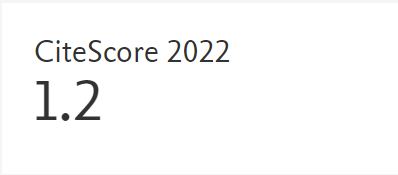Selección de microorganismos mesófilos biodesulfurizadores
Resumen
En el desarrollo de procesos de biodesulfurizadón de hidrocarburos (BDS) se requiere de métodos rápidos y confiables para la selección de microorganismos. En este trabajo se presentan los resultados correspondientes al proceso de selección de cepas mesófilas nativas de Colombia con utilidad potencial para procesos de BDS. El criterio de selección de las cepas fue la detección cualitativa y cuantitativa del 2-hidroxibifenilo (2-HBP), metabolito típico de la ruta conservativa del azufre orgánico (ruta 4S), en los ensayos bacterianos. Los microorganismos se cultivaron siguiendo dos metodologías diferentes, denominadas A y B, y se empleó como sustrato el compuesto modelo dibenzotiofeno (DBT). La evaluación cuantitativa de los metabolitos generados en ambos casos se realizó mediante cromatografía líquida de alta eficiencia (HPLC). Trece cepas bacterianas, incluyendo el Rhodococcus rhodocrous (IGTS 8), se valoraron y compararon con los métodos A y B. En el método A, el inoculo es expuesto al DBT desde el inicio del crecimiento. El método B consta de dos etapas: (i) Período de crecimiento bajo condiciones limitantes de azufre, (ii) Período de transformación en el cual el inoculo crecido es expuesto al sustrato orgánico azufrado. El cultivo de aislamientos bacterianos mesófilos, siguiendo la metodología B, permitió inducir la expresión del metabolismo del azufre orgánico y valorar la capacidad desulfurizadora de cuatro cepas nativas. En los cultivos de estas bacterias se detectó, tanto cualitativa como cuantitativamente, 2- hidroxibifenilo (2- HBP), producto del metabolismo del DBT.
Referencias bibliográficas
Crawford D. L. and Gupta R. K., 1990. "Oxidation of dibenzothiphene by Cunninghamella elegans", Curr Microbiol, 21: 229-231. https://doi.org/10.1007/BF02092161
Gallagher, J. R, Olson, E. S. and Stanley D. C, 1993. "Microbial desulfurization of dibenzotiofene: A sulfur-specific pathway", FEMS Microbiology Letters, 107: 31-36. https://doi.org/10.1111/j.1574-6968.1993.tb05999.x
Hartdegen, E. J., Coburn, J. M. and Roberts, R. L, 1984. "Microbial Desulfurization of Petroleum", CEP: 63 - 67.
Izumi, Y, Ohshiro, T., Ogino, H., Hiñe, Y and Shimao M., 1994. " Selective desulfurization of dibenzothiophene by Rhodococcus erythropolis D", Appl. Microbiol Biotechnol., 60: 223 -226. https://doi.org/10.1128/aem.60.1.223-226.1994
Kayser, K. J., Bielaga, B. A., Jackowski, K., Odusan, O. and Kilbane II, J. J.1993. "Utilization of organosulfur compounds by axenic and mixed cultures of Rhodococcus rhodochorous IGTS 8", J. Gen Microbiol, 139: 3123 -3129. https://doi.org/10.1099/00221287-139-12-3123
Kilbane, J. J. 1990. "Biodesulfurization: future prospects in coal cleaning", Proc. 7Th annual int Pittsburgh coal conf.: 373 - 382.
Kilbane,J J. and Bielaga, B. A. 1990. "Toward sulfur - free fuels", Chemtech, 20: 747-51.
Kilbane II, J. J and Jackowski, K. 1992. "Biodesulfurization of water-soluble coal - derived material by Rhodococcus rhodochorous IGTS 8", Biotechnol Bioeng, 40: 1107 -1114. https://doi.org/10.1002/bit.260400915
Kilbane II J. J. and Woodstock III., 1991a. "Mutant Microorganisms useful for cleavage of organic C - S bonds", Patent 5002888.
Kilbane II J. J. and Woodstock III. 1991b. "Mutant Microorganisms useful for cleavage of organic C - S bonds", Patent 5104801.
Kim, H. Y, Kim, T. S. And Kim, B. H., 1990. "Degradationof organic sulfur compounds and the reduction of diben-zotiophene to biphenyl and hydrogen sulfide by Desulfovibrio desulfuricansMb" Biotechnollett., 12: 761-764. https://doi.org/10.1007/BF01024736
Kodama, K, Nakatani, S. And Umehara, K. 1970. "Microbial conversion of petro - sulfur compounds part III. Isolation and identification of products from DBT", Agrie. Biol. Chem, 34: 1320 -1324. https://doi.org/10.1080/00021369.1970.10859781
Kodama, K, Umehara, K. and Minoda, S. 1973. "Identification of microbial products from DBT and its proposed oxidation pathway", Agr Biol. Chem., 37:1320 -1324. https://doi.org/10.1080/00021369.1973.10860640
Krawiec, S. 1990. "Bacterial desulfurizaation of thiophenes: screening techniques and some speculation regarding the biochemical and genetic bases", Dev. Ind. Microbiol 32: 103-114.
Monticello, D. J., 1993. "Biocatalytic desulfurization of petroleum and middle distillates", Environmental Progress, 12 (1): 1-4. https://doi.org/10.1002/ep.670120103
Monticello, D. J., 1994. "Biocatalytic desulfurization, Hydrocarbon Processing", Clean Fuels Technology (February): 39-45.
Ohshiro, T., Hirata T. and Izumi, Y, 1995. "Microbial desulfurization of dibenzothiophene in the presence of hydrocarbons", Appl. Microbiol Biotechnol., 44: 249 -252. https://doi.org/10.1007/BF00164510
Olson, E. S., Stanley, D. C. and Gallagher, J. R, 1993. "Characterization of intermediates in the microbial desulfurization of dibenzothiophene", Energy & Fuels, 7: 159-164. https://doi.org/10.1021/ef00037a025
Oldfield, C, Pagrebinsky, O, Simons, J., Olson, E. S. and Kulpa, Ch. F. 1997."Elucidation of the metabolic pathway for dibenzothiophene desulfurization by Rhodococcus sp. strain IGTS8 (ATCC 53968)", Microbiology, 143: 2961 -2973. https://doi.org/10.1099/00221287-143-9-2961
Omori, T., Monna, L., Saiki, Y. and Kodama T., 1992. "Desulfiirization of dibenzothiophene by Corynebacterium sp. strain SYI", Appl. Environ Microbiol, 58: 911 - 915. https://doi.org/10.1128/aem.58.3.911-915.1992
Özbas;, T., Durusoy, T. Erincin, E. and Yürüm, Y 1996." Optimization of the growth parameters of Rhodococcus rhodochorous, a sulfur - removing", Fuel, 75 (13): 1556 -1600.
Patel, S. B., Kilbane II, J. J. and Webster D. A. 1997. "Biodesulphurization of dibenzothiophene in hydrophobic media by Rhodococcus sp. strain IGTS", Chem Tech. Biotechnol, 68: 1-7. https://doi.org/10.1002/(SICI)1097-4660(199705)69:1<100::AID-JCTB675>3.0.CO;2-9
Shennan J. L. 1996. "Microbial attack on sulphur containing hydrocarbon implications for Biodesulfurization of oils and coals", J.Chem. Tech. Biotechnology, 67: 109 -123. https://doi.org/10.1002/(SICI)1097-4660(199610)67:2<109::AID-JCTB532>3.0.CO;2-Y
Sorkhoh, N. A., Ghannoum, M. A., Ibrahim. A. S., Stretton, R. J. and Radwan, S.S., 1990. "Crude oil and hydrocar-bodegrading strain of Rhodococcus rhodochrous isolated from soil and marine environments in Kuwait", Environment Pollution, 65: 1-17. https://doi.org/10.1016/0269-7491(90)90162-6
Wang P. and Krawiec, S., 1994. "Desulfurization of dibenzothiophene to 2- hydroxybiphenyl by some newly isolated bacterial strains", Arch Microbiol, 161: 266 -271. https://doi.org/10.1007/BF00248703
Yamada, K., Minoda, Y, Kodama, K, Nakatani, S. and AkasaM, T., 1968. "Microbial conversion of petro - sulfur compounds. Part I. Isolation and identyification of Dibenzothiophene utilizing Bacteria", Agr Biol. Chem. 32 (7): 840-845. https://doi.org/10.1080/00021369.1968.10859154
Descargas
Derechos de autor 1998 Creative Commons Reconocimiento-NoComercial-CompartirIgual 4.0.

Esta obra está bajo una licencia internacional Creative Commons Atribución-NoComercial-CompartirIgual 4.0.












